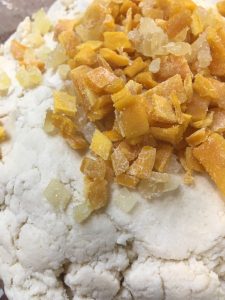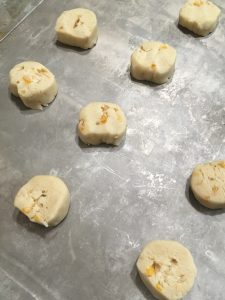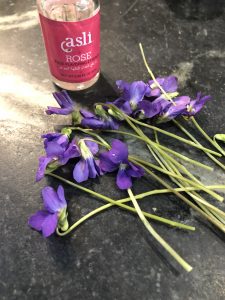 Hm. This batch of sugared violets did not work great. I picked a bunch of lawn violets — all I had, which wasn’t very many. And then I tried the dip in sugar syrup, put on wax paper, sprinkle with caster sugar method of sugaring them.
Hm. This batch of sugared violets did not work great. I picked a bunch of lawn violets — all I had, which wasn’t very many. And then I tried the dip in sugar syrup, put on wax paper, sprinkle with caster sugar method of sugaring them.
The problem is that the clump up as soon as they get wet, and then all the pretty definition is lost. Maybe you could separate it with tweezers, but I think they’d likely tear badly if you tried? I didn’t have the patience for it. So I have clumpy sugared violets — I have one idea for a recipe that they’ll probably work okay in, but it wasn’t what I intended. Bah.

The other method is more time-consuming, and involves using a paint brush to brush them with egg wash and they sprinkling sugar on them — I think that would likely work better to maintain the flower’s appearance. Next time I have violets, I guess I’ll try that — but I’m all out now, so I suppose it will have to wait ’til next year.
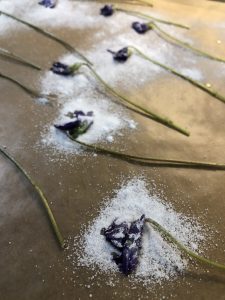
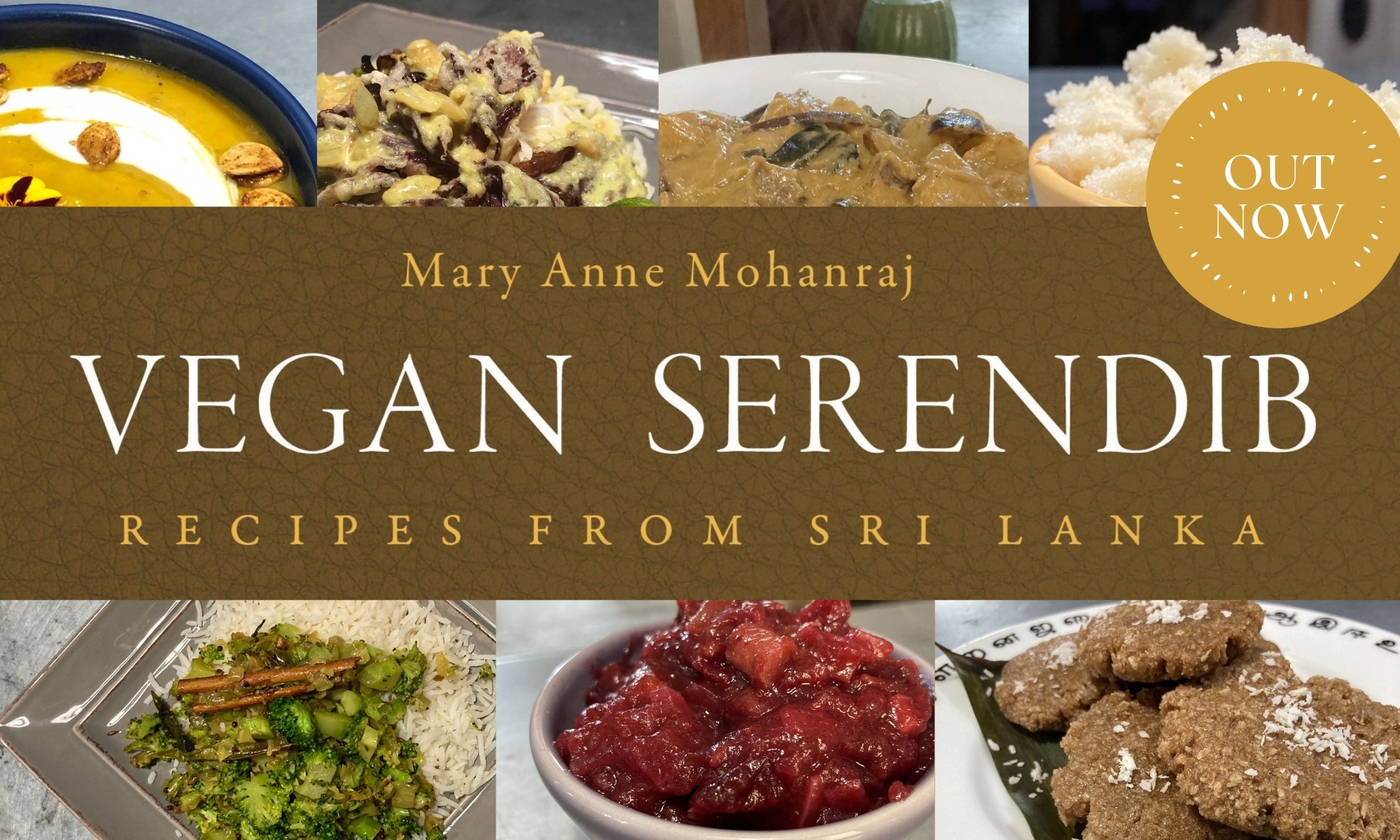
 (90 minutes, serves 8)
(90 minutes, serves 8)

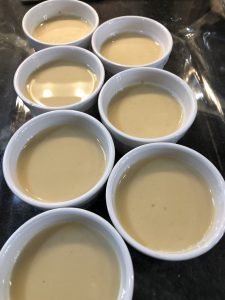
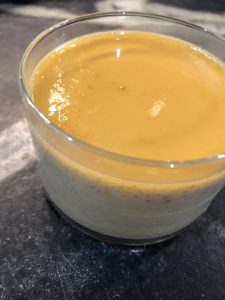
 Peppermint marshmallows, two ways. I asked Kavi which she liked better, and she couldn’t decide — the peppermint swirl ones are more intensely peppermint; the chocolate-peppermint ones actually have more peppermint (same marshmallows, plus bits on top), but the dark chocolate has a strong enough presence that the overall effect is less peppermint-y.
Peppermint marshmallows, two ways. I asked Kavi which she liked better, and she couldn’t decide — the peppermint swirl ones are more intensely peppermint; the chocolate-peppermint ones actually have more peppermint (same marshmallows, plus bits on top), but the dark chocolate has a strong enough presence that the overall effect is less peppermint-y. 

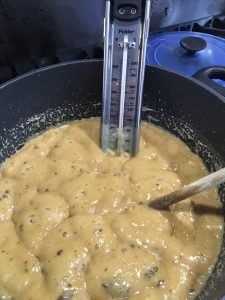

 Usually I make exactly what I write in the recipe, but the truth is, I find cutting caramels labor-intensive enough that it’s something I only plan to do once a year or so. So I’m not going to make these again anytime soon, even though they’re quite delicious, and even though I think they would be just the tiniest bit tastier with the proportions I’m going to write down below. I made these with 3/4 c. mango pulp and 1/4 c. passionfruit pulp, because that’s what I had on hand, but I think they would be even better with 1/2 and 1/2, so that the tartness of the passionfruit would better balance the mango. But honestly, I think any ratio of those two would be delicious, as long as you ended up with 1 c. fruit pulp total.
Usually I make exactly what I write in the recipe, but the truth is, I find cutting caramels labor-intensive enough that it’s something I only plan to do once a year or so. So I’m not going to make these again anytime soon, even though they’re quite delicious, and even though I think they would be just the tiniest bit tastier with the proportions I’m going to write down below. I made these with 3/4 c. mango pulp and 1/4 c. passionfruit pulp, because that’s what I had on hand, but I think they would be even better with 1/2 and 1/2, so that the tartness of the passionfruit would better balance the mango. But honestly, I think any ratio of those two would be delicious, as long as you ended up with 1 c. fruit pulp total.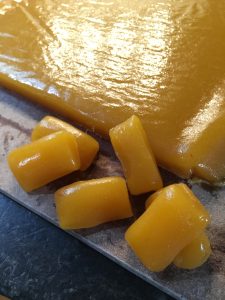

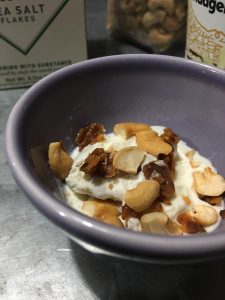
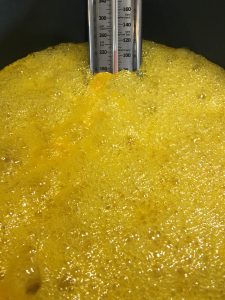
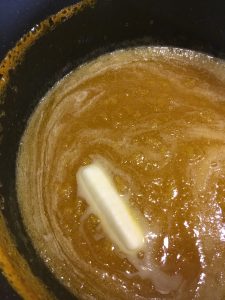

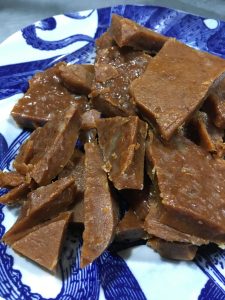 Passionfruit Brittle
Passionfruit Brittle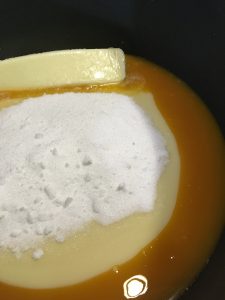
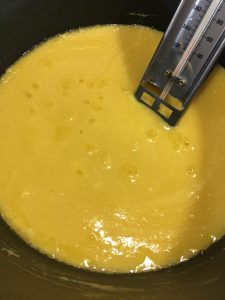

 Rich passionfruit flavor and a hint of rose scent. This delicate cake is lovely with a very light tea. Passionfruit puree can be ordered online, or is often found in Mexican grocers, sometimes frozen. If you have are lucky enough to have actual passionfruit on hand, you can, of course, pulp and puree them yourself; strain out the hard seeds if you do.
Rich passionfruit flavor and a hint of rose scent. This delicate cake is lovely with a very light tea. Passionfruit puree can be ordered online, or is often found in Mexican grocers, sometimes frozen. If you have are lucky enough to have actual passionfruit on hand, you can, of course, pulp and puree them yourself; strain out the hard seeds if you do.

 Mango-Ginger Shortbread
Mango-Ginger Shortbread